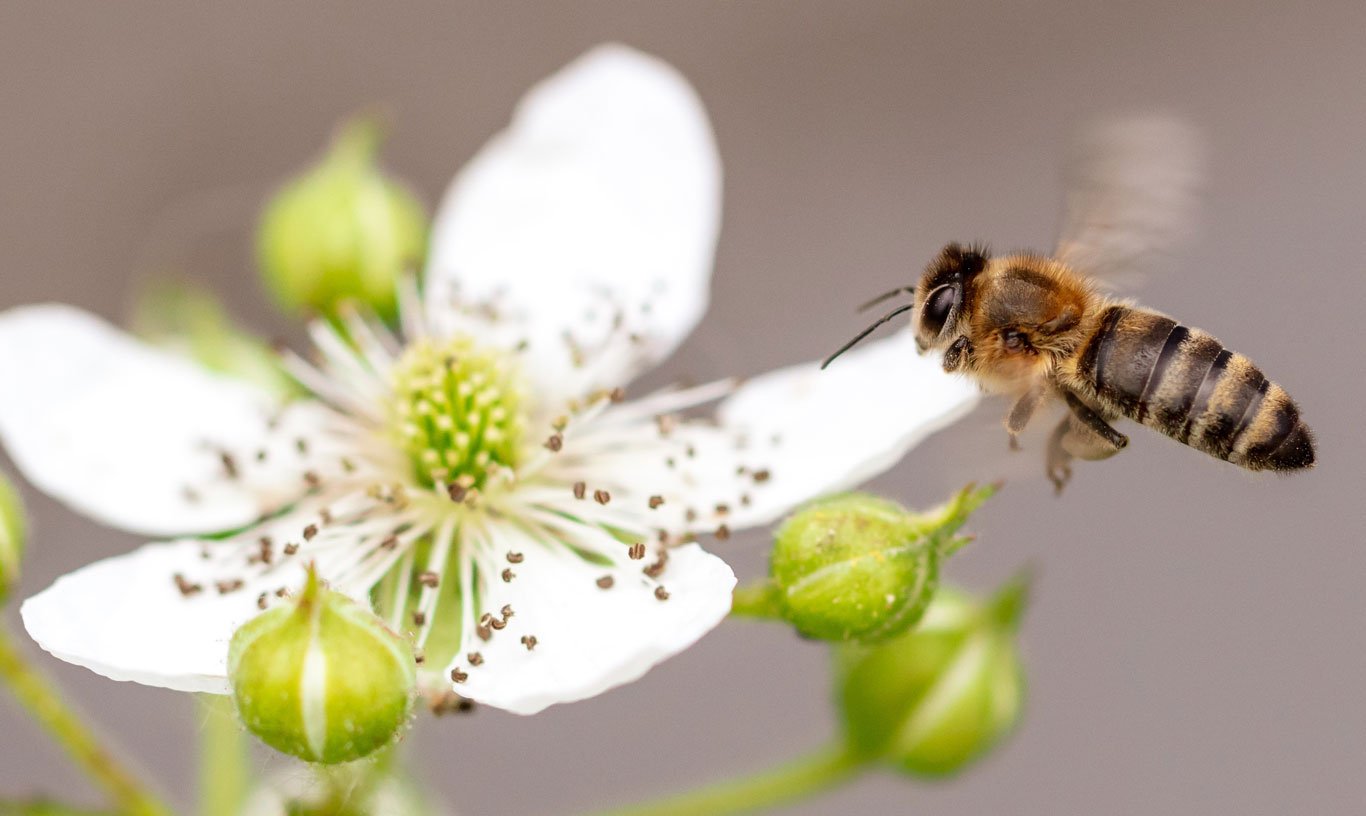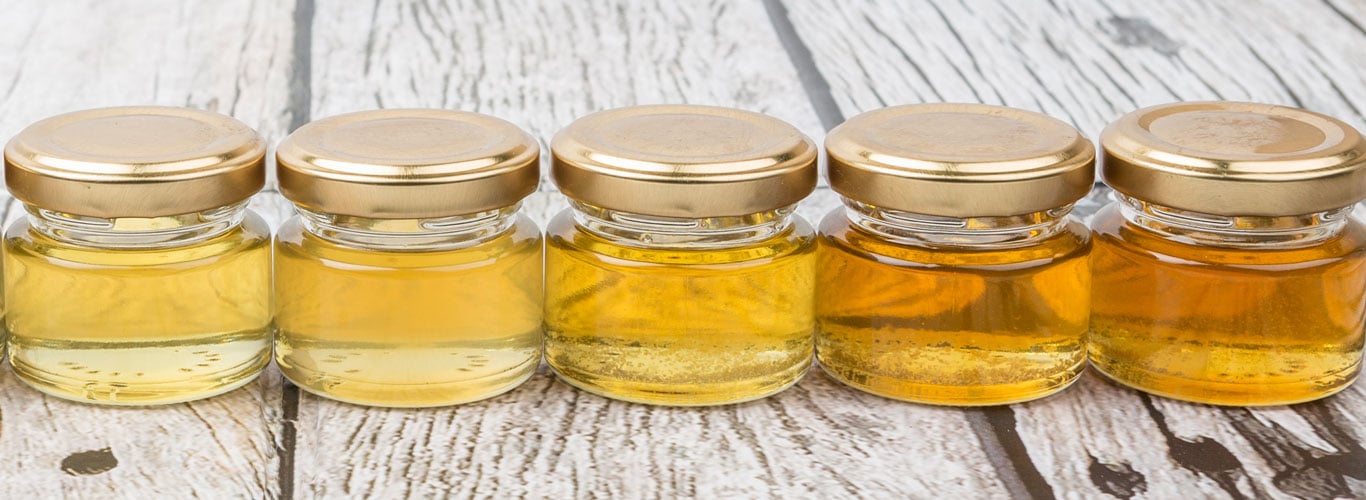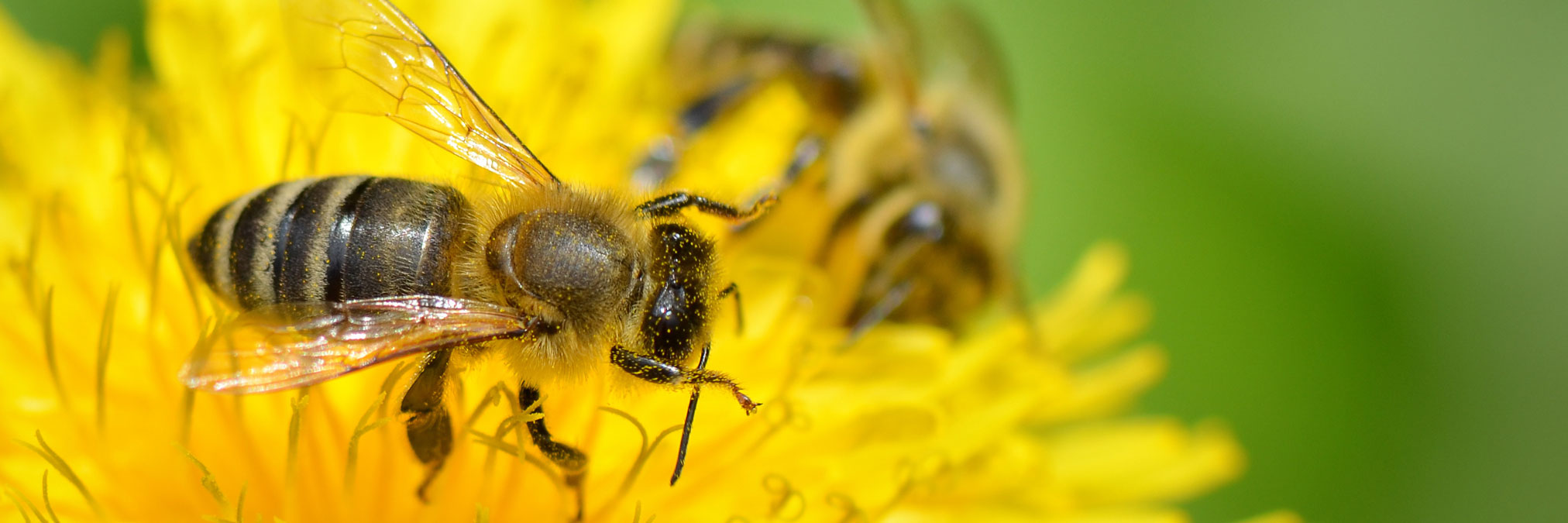Updated 5/14/24.
How much do you know about honey bees? Several years ago, my answer would’ve been very little. But when I started beekeeping that all changed. So, what better way to celebrate National Honey Bee Day in August than to share ideas on teaching about honey bees in the classroom?
Don’t BEE Afraid – Dispel Fear
The most foundational lesson we can teach: bees don’t want to hurt anyone. They’re actually very focused on the job they have to do.
The Basics
Only female honey bees have stingers, and they can sting only one time. (Well, to be clear, the queen bee is another matter, but she rarely leaves the hive.) In short, if bees sting, they’re making a fatal choice. Their stinger, which is barbed like a fish hook, gets stuck in the skin and is pulled away, causing injury to the bee. As such, they don’t just sting to sting, and they sting only when threatened.
 So, how can you avoid the sting?
So, how can you avoid the sting?
- Bee slow – fast movements excite bees. Beekeepers learn to move slowly and methodically when checking their hives so the honey bees don’t go into attack mode caused by pheromones.
- Bee quiet – loud noises put bees on alert. An unexpected loud noise would scare you, right?
- Bee light – wearing dark clothing seems to be a bad idea too.The reasoning is that honey bees have evolved to be more defensive toward dark figures because of a long history of bear and other dark colored predator attacks on beehives in the wild.
- Bee unscented – honey bees are sensitive to smells. If you wear flowery-scented shampoo, lotion, deodorant, and so on that smells good to you, the bees could love it or hate it –causing them to react. They also react to strong body odor.
It’s never a good idea to approach a hive without protective gear. But when you see a honey bee or two on a flower or at a water source, remember those tips. If you want to watch and follow them, it’s most likely that the honey bee won’t even notice you.
 BEE Curious: Host a Honey Tasting
BEE Curious: Host a Honey Tasting
Not all honey tastes the same. So, what a better way to learn this than a honey tasting event.
The flower the nectar is collected from lends its flavor to the overall taste of the honey. In springtime, our area (southeast Kansas) has a high concentration of white clover. This makes the honey very light in color and taste. Crops, such as buckwheat, can make the appearance and taste almost like molasses.
Collect as many of these different types of honey as you can. Local farmer’s markets commonly have honey vendors. Ask them if they have honey from different times of the year or from different aviaries that have a distinct flavor to get a good variety to taste. Another option is to contact an area beekeeping club. These clubs look for opportunities to educate the public about bees, and club members might be willing to provide samples from beehives at different locations.
If you choose honey from stores, be aware that some aren’t 100% pure honey, and can be watered down or contain fillers that can affect the taste. There are commercial beekeepers that sell through stores but also distributors that import the honey and only package it in the US.
Whatever honeys you choose, it doesn’t take much. You can use small containers and toothpicks for the students to taste the samples. If you’re not worried about spills, give each student a cup of water to carry with them so they can rinse their tastebuds before each sample. You can number the samples and have the students vote for their favorite number after the last taste.
Then, discuss the different tastes of the honey and what flowers they think each came from. You can also talk about the color of the honey and what correlation it had with the taste. Wrap up with facts, such as how many honey bees it takes to make a quart of honey and why honey bees make honey.
BEE Fun: Teach the Waggle Dance
Don’t worry, the waggle dance isn't the next dab or floss. It’s actually a movement honey bees do. Teaching students to waggle is not only educational but also entertaining.When a honey bee finds a bounty of pollen or nectar, it asks the other bees in their hive to follow to the location by communicating through a waggle dance. The dance has to be convincing because there’s usually competition from other honey bees who think they have the best spot too.
There are tons of videos on the internet of bees performing the waggle dance. You might show your students the real thing before asking them to waggle themselves. The honey bees flap their wings and shake their booty. Elementary students are more open to doing the motions, but it’s fun for all ages. Do you think you could get your principal to waggle dance?

The waggle dance isn’t the only way honey bees communicate, but it’s a great introduction to discuss bee senses, which are the same as human senses except for hearing (although, they can feel vibrations). Perhaps this could be a great collaboration with the music teacher to discuss and feel vibrations? Or, have your students read a book before a guest speaker comes so they can add their knowledge to the conversation. STREAM, anyone?
Ask an Expert to BEE a Guest Speaker
Beekeeping might be more prevalent in your area than you might think. If you ask around, you might find someone in your school that knows a local beekeeper. If you don’t have a local beekeeping club, then ask someone at your city police station. They usually keep a list of local beekeepers in case a honey bee swarm is reported and needs to be removed.
Speaking from experience, some beekeepers can be a little shy at first about presenting, and some aren’t very techy. The good news is, if you can get them talking about bees, they tend to find a lot more to say than they thought. In this instance you won’t need a digital presentation or device to get students excited. Ask the beekeeper to bring in tools, safety gear, and a hive that’s not in use. Sometimes, frames with already built honeycomb are kept for several purposes. And if you’re really lucky, they might have a frame that is filled with honey so your students can feel how heavy the frame is and see what the capped honey looks like before it’s extracted and put in containers.
Depending on the time of year and the weather, a beekeeper might bring an observation hive. Who wouldn’t get excited about seeing live bees safely behind glass? Every once in a while, you hear ”I hate bees!”, but even haters tend to want to see what these amazing insects are up to.
If there are no beekeepers to be found to help you out, contact a college or university located in your state. Many times they have an entomology department with professors who have knowledge about honey bees and are happy to share their knowledge. Local extension offices sometimes have resources to help you too.
BEE Inquisitive: Collect Trivia Questions
Trivia can be fun for any age group! And there are so many categories, such as anatomy, history, honey, architecture, behavior, and society. Fun facts are all over the Internet, but be sure to look at reputable sites, such as education institutes.
One option for the game is a spinner on a wheel that picks a category at random. In a recent search, several DIY instructions were available for different skill levels. A spinner trivia game would also be fun as a yearlong project. Could you incorporate it in a rewards program? How about setting aside 10 minutes a day once a week for Beeday, reinforcing your honey bee lesson for the rest of the semester or year?

I’ve seen trivia in action, and it’s amazing how much the kids already know about bees, from their parents, school, and/or the students’ digging deeper into an interest. And there are so many fun facts about honey bees. Check these out:
- Q: How many eyes does a honey bee have?
A: 5 (3 of them are smaller and only light sensitive) - Q: How many times per second does a honey bee flap its wings?
A: 230 times (that’s where the buzz comes from) - Q: Do honey bees sleep?
A: Yes (it’s rumored that bees don’t sleep, but studies have proven they do). - Q: How much honey can a honey bee collect in its lifetime?
A: 1/12 teaspoon - Q: True or false: Honey is the only food that has all substances necessary to sustain life, including water?
A: true - Q: What came first, the formation of the Rocky Mountains or honey bees?
A: honey bees
Plan Your Bee Lesson
These are only a few of the many ideas for honey bee lessons. Also consider scavenger hunts, reading lists, and art projects. However you choose to teach about honey bees, awareness is key for our future generations.
If you need more time to plan, World Bee Day is in May. To help you get started, click on the following resources.
Thanks for spreading awareness!
MORE RESOURCES:
TOPICS: IDEAS & INSPIRATION, Science, Activities, Hands-on Learning, STEAM



